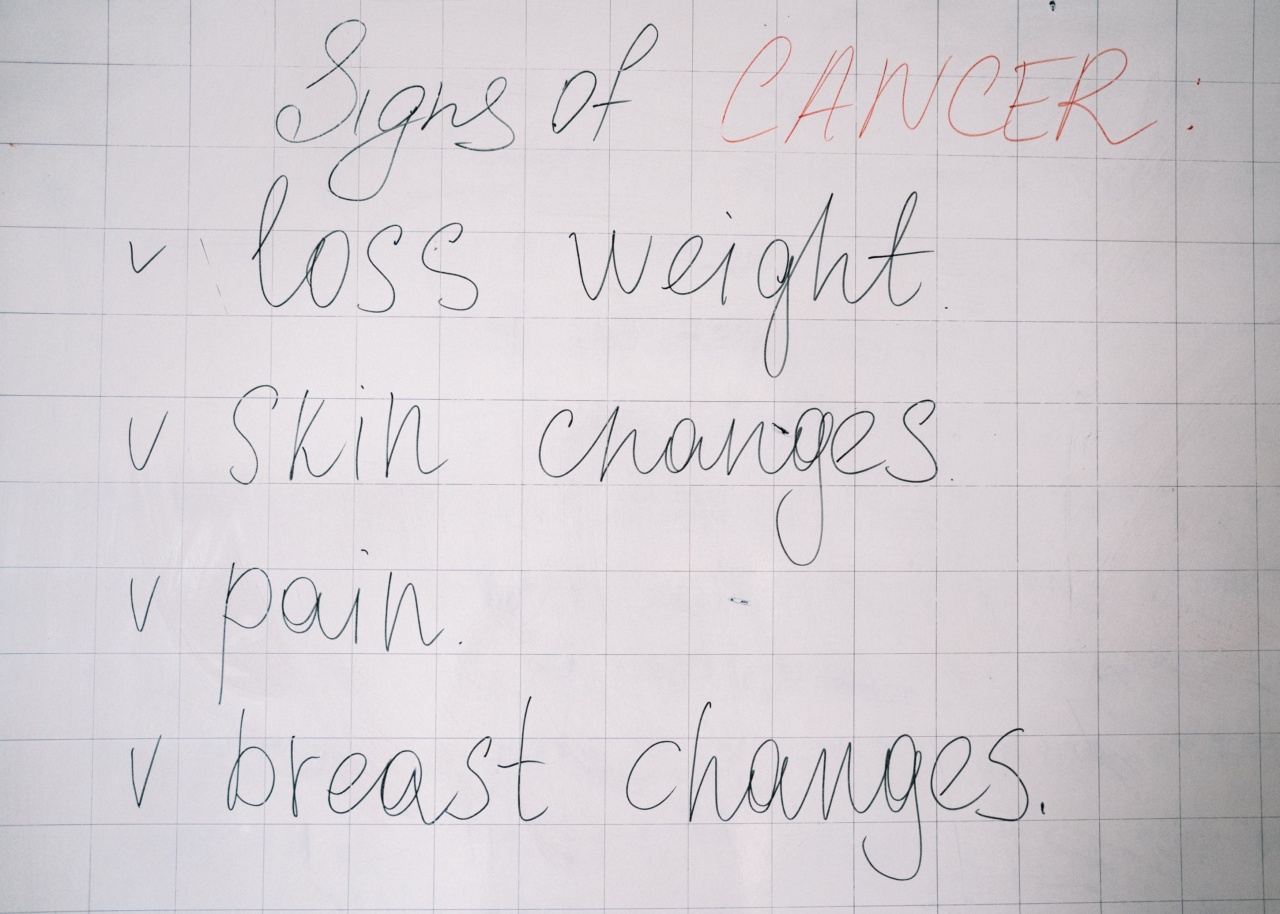Testicular cancer is a type of cancer that affects the testicles, which are the male reproductive glands located in the scrotum.
It is relatively rare compared to other types of cancer, but it is important to be aware of the symptoms as early diagnosis and treatment significantly increase the chances of successful treatment and recovery.
Risk Factors
While the exact cause of testicular cancer is unknown, certain factors have been identified as potential risk factors. These include:.
- Age: Testicular cancer is more common in young and middle-aged men, with the highest risk occurring between the ages of 15 and 35.
- Undescended Testicle: Men who have a testicle that did not descend into the scrotum at birth have a higher risk of developing testicular cancer.
- Family History: Having a close relative, such as a father or brother, with a history of testicular cancer increases the risk.
- Personal History: Men who have had testicular cancer in one testicle have an increased risk of developing it in the other testicle.
- Ethnicity: Testicular cancer is more common in white men compared to men of other ethnic backgrounds.
- HIV infection: Men with HIV have a higher risk of developing testicular cancer.
Symptoms
It is important to note that not all symptoms necessarily indicate testicular cancer, but if you experience any of the following symptoms, it is essential to consult a healthcare professional for further evaluation:.
1. Lump or swelling in the testicle
A lump or swelling in either testicle is the most common symptom of testicular cancer. It may feel like a pea-sized or larger mass within the testicle.
It is important to regularly perform self-examinations to detect any unusual changes in the size or texture of the testicles.
2. Testicular pain or discomfort
Persistent pain or discomfort in the testicles, scrotum, or groin area can be a sign of testicular cancer. The pain may range from a dull ache to sharp, intense pain.
It is important to differentiate between occasional discomfort and persistent pain that lasts for weeks.
3. Heaviness or swelling in the scrotum
If you notice an unexplained heaviness or swelling in the scrotum, it may be a symptom of testicular cancer. Swelling can occur in one or both testicles and may feel like fluid accumulation, giving the scrotum a larger-than-normal appearance.
4. Changes in testicular size or shape
Testicular cancer may cause one testicle to become larger or smaller than the other. Additionally, you may notice changes in the shape or consistency of the testicle.
Any abnormalities in size, shape, or texture should be evaluated by a healthcare professional.
5. Painless testicular lump or mass
In some cases, testicular cancer may present as a painless lump or mass in the testicle. This can make it difficult to detect without regular self-examinations. Any new or unusual growth should be checked by a doctor.
6. Back pain or abdominal pain
In advanced stages of testicular cancer, the cancer cells can spread to nearby lymph nodes or other organs, resulting in back pain or abdominal pain. The pain may feel persistent and unrelated to any injury or physical strain.
7. Breast enlargement or tenderness
In rare cases, testicular cancer can cause hormonal imbalances, leading to breast enlargement or tenderness. This condition, known as gynecomastia, occurs due to the production of hormones by the tumor.
8. Fatigue and unexplained weight loss
General symptoms such as fatigue, unexplained weight loss, and a sense of overall ill-health can be indicators of various types of cancers, including testicular cancer.
If you experience these symptoms along with any other potential signs, it is crucial to seek medical attention.
9. Enlarged lymph nodes
If the cancer has spread, you may notice enlarged lymph nodes in your neck, collarbone, or abdomen. These swollen lymph nodes may feel firm or rubbery when touched.
10. Difficulty breathing and chest pain
In rare cases, testicular cancer cells can spread to the lungs, leading to symptoms such as difficulty breathing and chest pain.
If you experience these symptoms along with other potential signs of testicular cancer, urgent medical evaluation is required.
Conclusion
Early detection and timely medical intervention significantly improve the prognosis for testicular cancer. Regular self-examination, knowledge of potential symptoms, and prompt medical attention are vital for early diagnosis and effective treatment.
If you notice any changes or experience any symptoms related to the testicles or scrotum, it is essential to consult with a healthcare professional immediately.





























